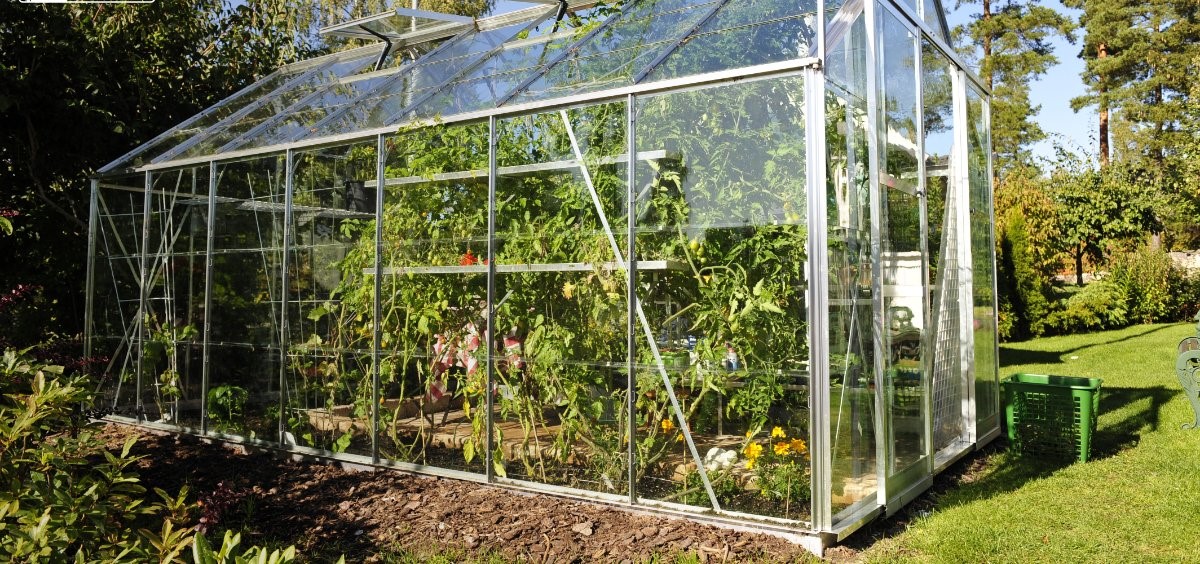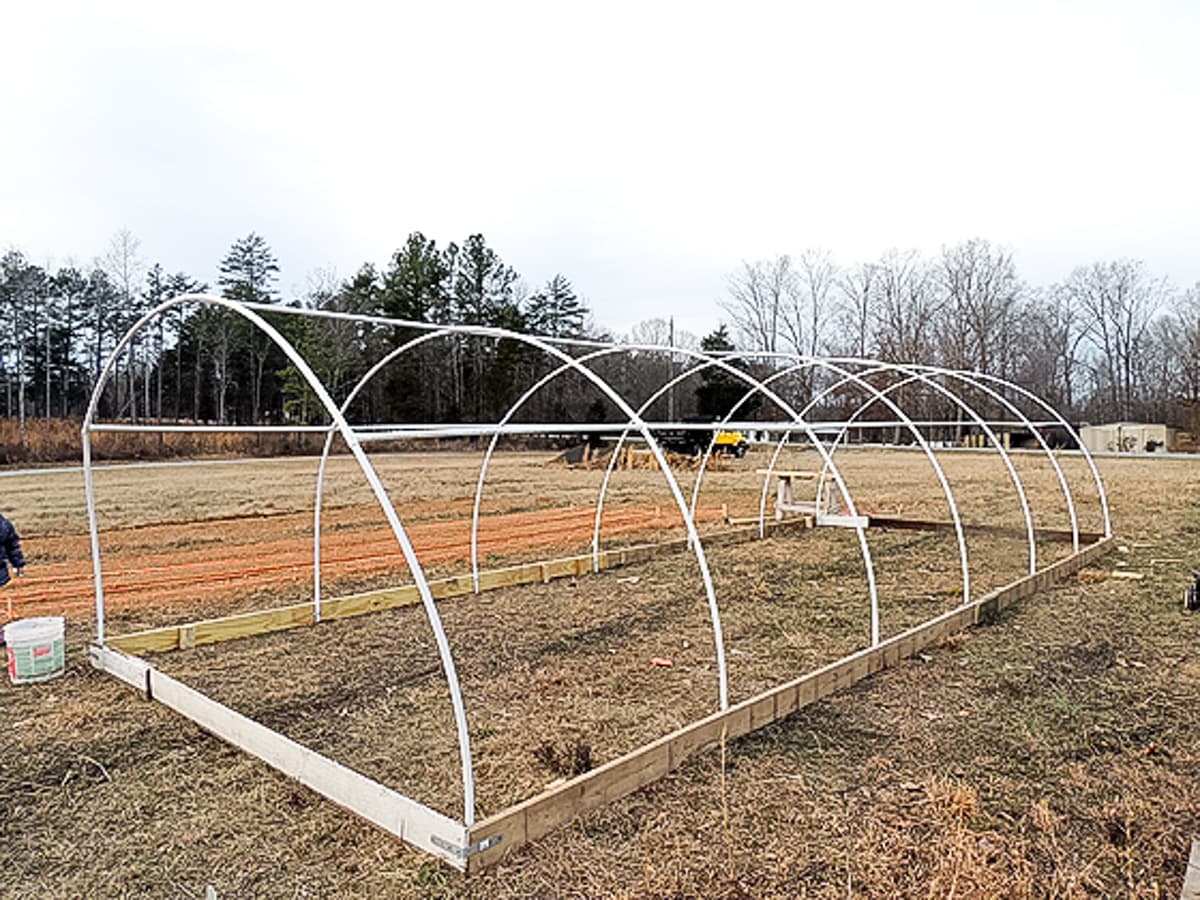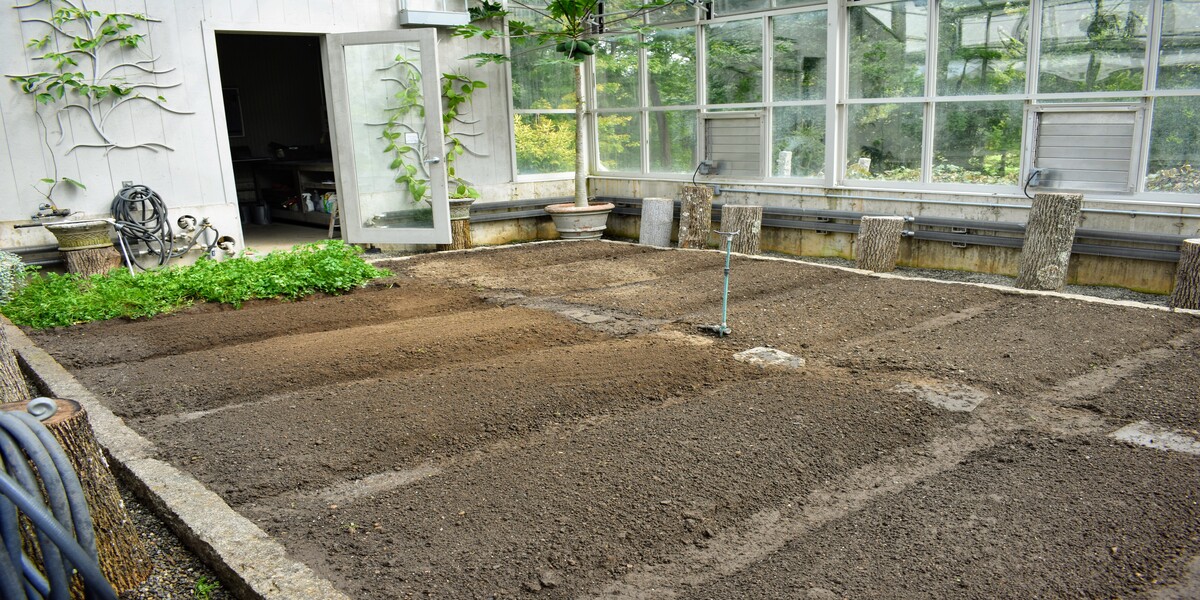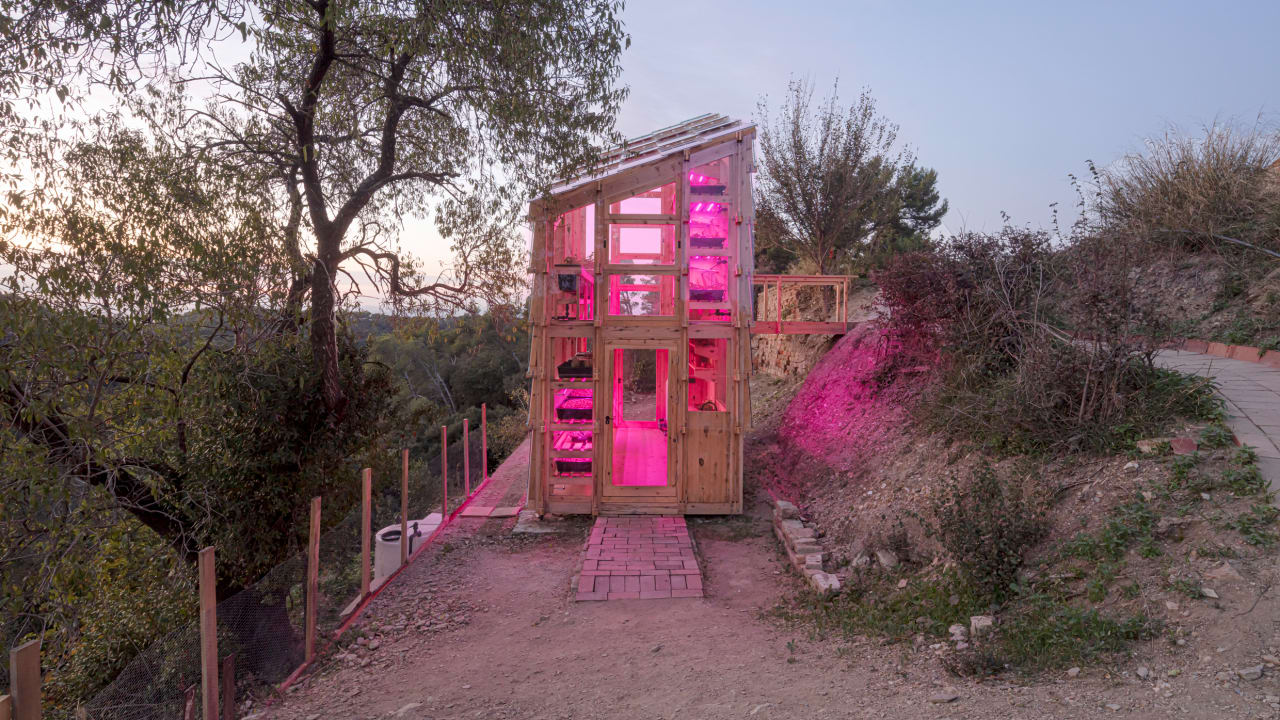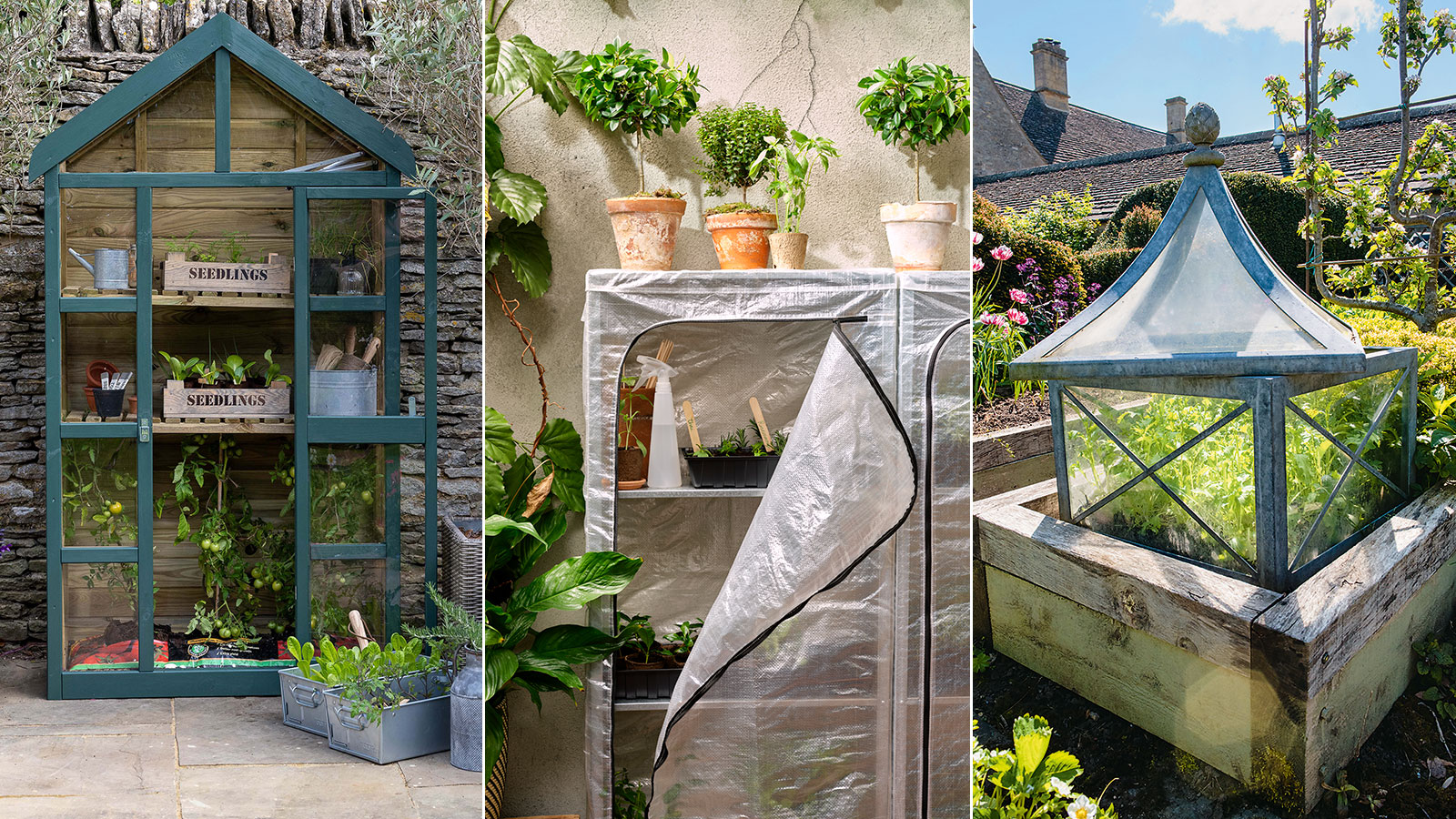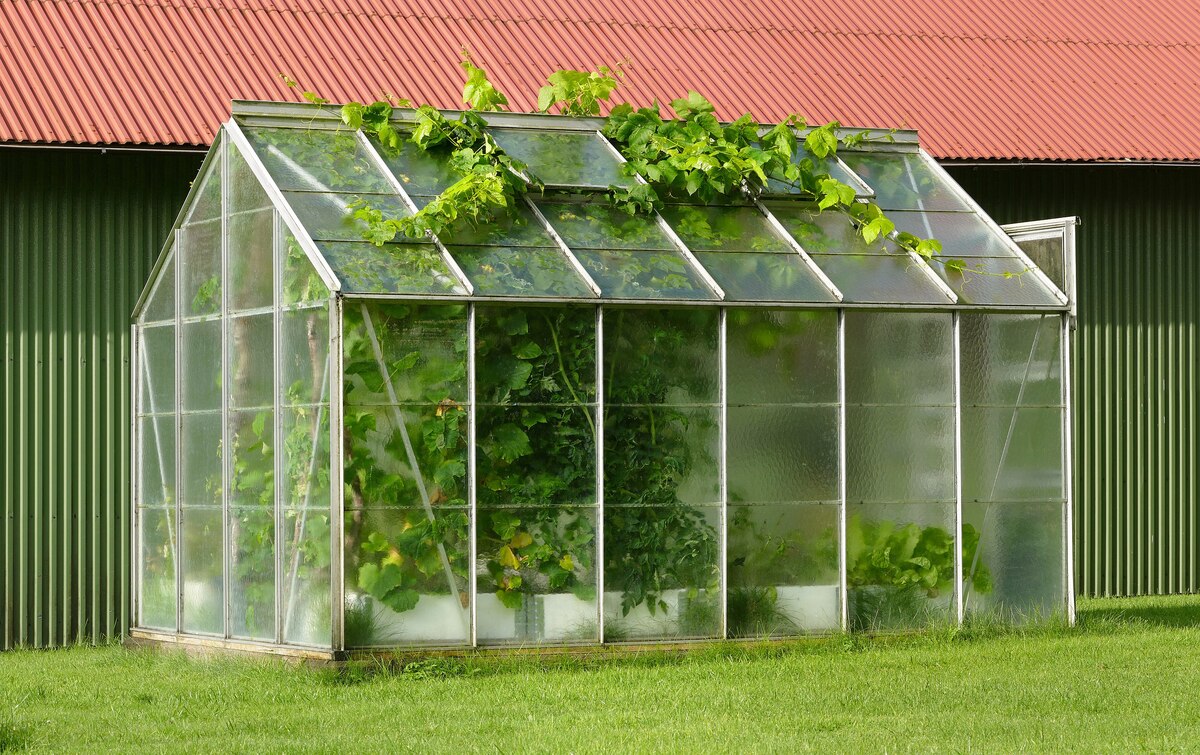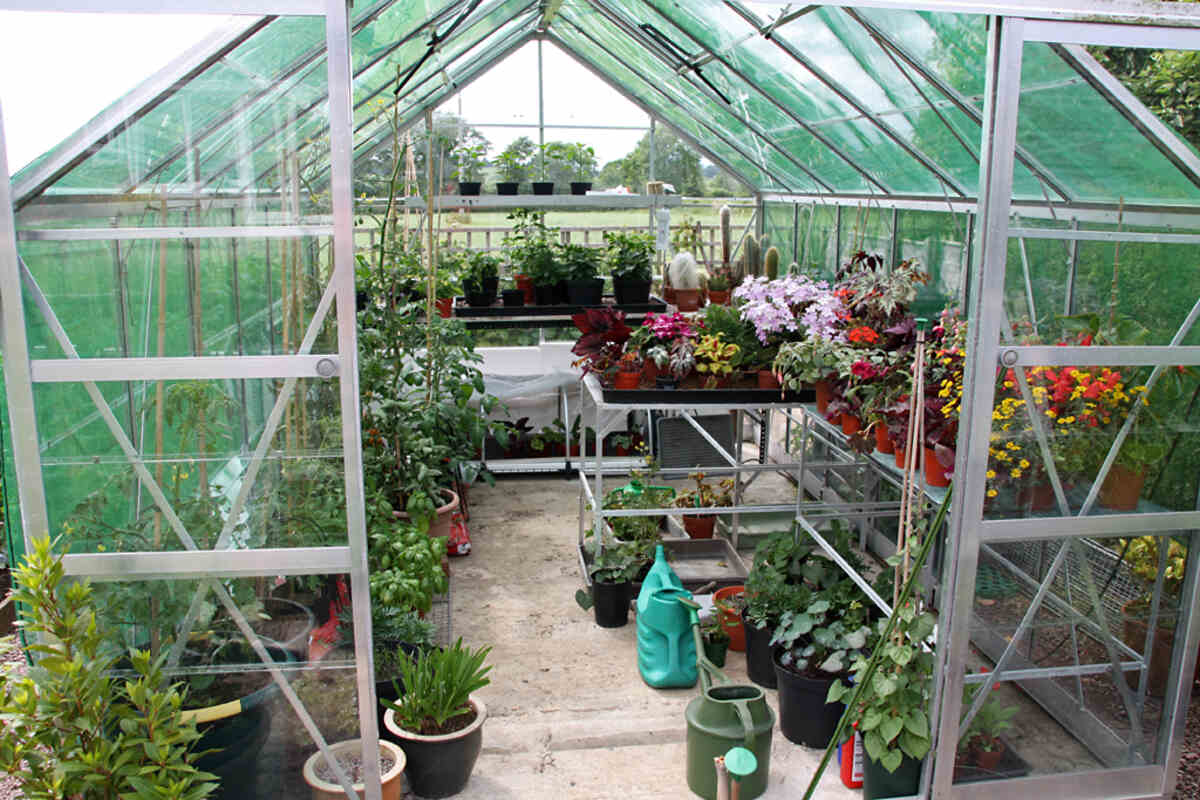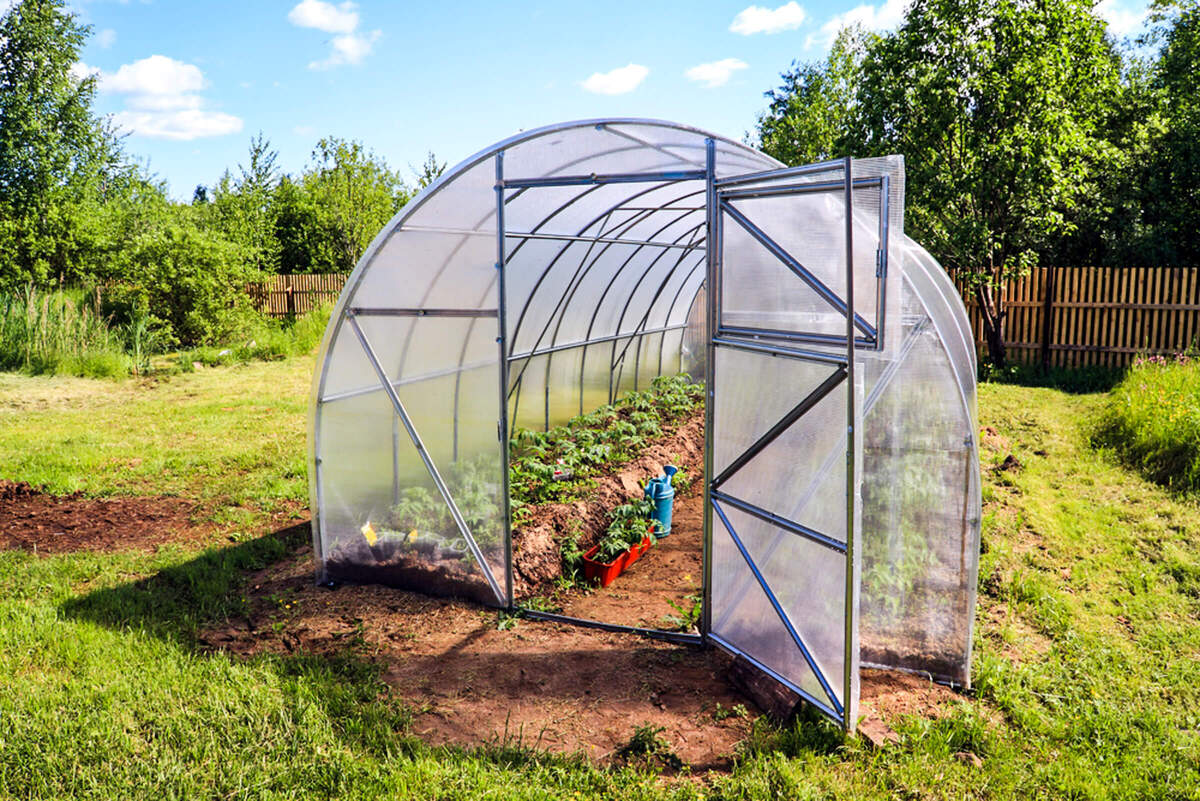Home>Gardening Techniques>DIY Projects>How To Build An Underground Greenhouse
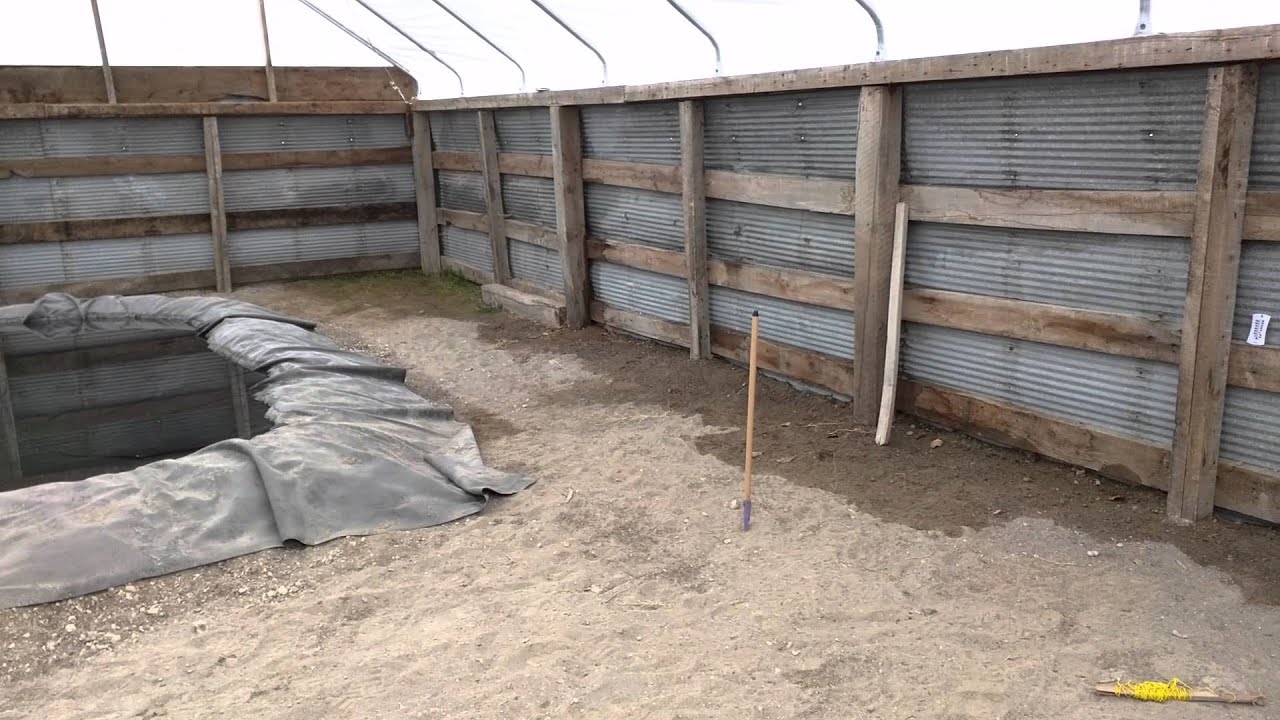

DIY Projects
How To Build An Underground Greenhouse
Modified: February 8, 2024
Learn how to build your own DIY underground greenhouse with this step-by-step guide. Create an eco-friendly and efficient gardening space using simple and affordable materials.
(Many of the links in this article redirect to a specific reviewed product. Your purchase of these products through affiliate links helps to generate commission for Chicagolandgardening.com, at no extra cost. Learn more)
Table of Contents
Introduction
Welcome to the world of underground greenhouses, where you can create a thriving garden even in the harshest climates. Building an underground greenhouse is a fantastic DIY project for gardening enthusiasts and can provide numerous benefits that traditional above-ground greenhouses cannot offer. In this article, we will explore the ins and outs of constructing an underground greenhouse, from selecting the right location to maintaining and caring for your plants.
Underground greenhouses, also known as earth-sheltered or pit greenhouses, are designed to utilize the natural insulation properties of the earth to create a stable and controlled environment for plant cultivation. By harnessing the earth’s thermal mass and protecting plants from extreme temperature fluctuations, underground greenhouses offer a longer growing season and increased protection against cold winters and scorching summers.
The benefits of underground greenhouses extend beyond extended growing seasons. By being nestled into the ground, these structures naturally blend with the surroundings, creating a visually appealing and harmonious garden space. Additionally, the use of natural insulation reduces the need for excessive heating or cooling, making underground greenhouses more energy-efficient and cost-effective in the long run.
Imagine picking fresh tomatoes in the heart of winter or enjoying vibrant blooms year-round – an underground greenhouse allows you to make this a reality. Whether you are a seasoned gardener or just starting your green thumb journey, building and maintaining an underground greenhouse can be a fulfilling and rewarding experience. In the following sections, we will guide you through the key considerations and steps involved in constructing your very own underground greenhouse.
Benefits of Underground Greenhouses
Underground greenhouses offer a multitude of advantages that make them an attractive option for avid gardeners and enthusiasts. Let’s delve into the key benefits of these unique gardening structures:
1. Extended Growing Season: By harnessing the earth’s natural insulation, underground greenhouses create a steady and favorable environment for plant growth. This extends the growing season, allowing you to start planting earlier in the spring and continue harvesting well into the fall. You’ll have the opportunity to cultivate a wider variety of plants and enjoy fresh produce for a longer period of time.
2. Climate Control: Underground greenhouses provide excellent climate control due to their insulation properties. The earth’s thermal mass helps regulate temperature fluctuations, keeping the greenhouse cooler in the summer and warmer in the winter. This stable environment ensures optimal conditions for plants to thrive, regardless of the external climate.
3. Energy Efficiency: By utilizing the earth’s natural insulation, underground greenhouses require less energy to maintain a consistent temperature compared to above-ground structures. Consequently, you’ll save on heating and cooling costs, making it an eco-friendly and cost-effective investment in the long run.
4. Protection from Extreme Weather: Underground greenhouses provide a layer of protection against harsh weather conditions such as strong winds, heavy precipitation, and frost. The surrounding soil acts as a buffer, shielding plants from external elements and reducing the likelihood of damage or loss. This is especially beneficial for regions with unpredictable weather patterns.
5. Visual Appeal: Underground greenhouses seamlessly blend into their surroundings, creating a harmonious and visually appealing garden space. With the greenhouse nestled into the earth, the structure becomes a natural extension of the landscape, enhancing the overall aesthetics of your garden.
6. Increased Privacy: The sunken design of underground greenhouses offers an added layer of privacy. Since the structure is partially or completely below ground level, it reduces visibility from outside, allowing you to create a secluded and intimate gardening space.
7. Natural Pest Control: The earth-sheltered aspect of underground greenhouses helps create a natural barrier against pests such as insects and rodents. This reduces the need for chemical pesticides, making it a healthier and more environmentally friendly approach to pest control.
With these numerous benefits, it’s no wonder that underground greenhouses are growing in popularity among gardening enthusiasts. The next section will guide you through the process of selecting the right location for your underground greenhouse.
Selecting the Right Location
Choosing the right location for your underground greenhouse is crucial to ensure optimal growing conditions and long-term success. Consider the following factors when selecting a suitable spot:
1. Sunlight Exposure: Adequate sunlight is essential for photosynthesis and healthy plant growth. Look for a location that receives at least 6 hours of direct sunlight per day. South-facing slopes or open areas without obstructions will provide the best sunlight exposure.
2. Drainage: Ensure that the chosen location has good drainage to prevent waterlogging. Avoid areas prone to pooling or areas with high water tables, as excess moisture can lead to root rot and other plant diseases.
3. Wind Shelter: Consider the prevailing winds in your area and choose a location that offers some natural wind shelter. This will protect your plants from strong gusts that can cause damage or slow down growth. Existing structures, trees, or hedges can serve as effective windbreaks.
4. Soil Quality: Conduct a soil test to assess its quality and fertility. Aim for well-draining soil that is rich in organic matter. If the soil is heavy or clay-like, you may need to amend it with compost or other organic materials to improve its structure and drainage.
5. Accessibility: Select a location that is easily accessible for maintenance tasks, such as watering, fertilizing, and harvesting. Ensuring easy access will save you time and effort in the long run and make it more enjoyable to tend to your underground greenhouse.
6. Land Use Regulations: Check local regulations or consult with your municipality to ensure that there are no restrictions or permits required for building an underground greenhouse on your property. Some areas may have specific zoning ordinances or building codes that need to be followed.
7. Aesthetics: Consider the overall aesthetics of your garden and how the underground greenhouse will fit into the landscape. You may want to choose a location that provides an appealing view from your home or blends well with existing garden features.
By carefully considering these factors, you can select the ideal location for your underground greenhouse. Once you have identified the perfect spot, it is time to move on to the design considerations that will shape your underground greenhouse’s functionality and aesthetics.
Design Considerations
When it comes to designing your underground greenhouse, there are several important considerations to keep in mind. These design elements will not only impact the functionality and efficiency of your greenhouse but also contribute to its overall aesthetics:
1. Size and Layout: Determine the size of your underground greenhouse based on the available space and your gardening needs. Consider the number of plants you want to grow and leave enough room for walkways and work areas. Plan the layout to optimize the use of space and ensure easy access to all plants.
2. Orientation: Proper orientation is crucial to maximize sunlight exposure. Position the entrance and windows facing south to capture the most sunlight throughout the day. This will provide your plants with the optimal amount of light they need for photosynthesis and growth.
3. Foundation and Insulation: Build a strong foundation to support the weight of the soil and protect against moisture damage. Use materials like concrete or treated wood to create a sturdy base. Additionally, insulate the walls and floor of the greenhouse to enhance its thermal properties and maintain a stable temperature.
4. Ventilation: Proper ventilation is essential to prevent excessive heat buildup and ensure sufficient airflow. Install vents or windows that can be opened and closed as needed. Consider incorporating a fan or exhaust system to promote air circulation and control humidity levels.
5. Lighting: Supplement natural sunlight with artificial lighting, especially during the darker winter months. Choose energy-efficient grow lights that provide the appropriate spectrum of light for optimal plant growth. Place the lights strategically to evenly distribute light throughout the greenhouse.
6. Watering System: Install a reliable watering system to ensure consistent moisture levels for your plants. Consider using automated drip irrigation or misting systems to efficiently deliver water directly to the root zone. This will help prevent overwatering or underwatering and save you time and effort in manual watering.
7. Storage and Work Area: Allocate space for storage and a dedicated work area within your underground greenhouse. This will provide a convenient space to store gardening tools, pots, and supplies, as well as a comfortable area for potting, seed starting, and other tasks.
8. Aesthetic Features: Incorporate aesthetic elements into your design, such as decorative windows, skylights, or architectural details. Consider using natural materials, like stone or reclaimed wood, to enhance the visual appeal and create a harmonious connection with the surrounding landscape.
By carefully considering these design aspects, you can create an underground greenhouse that not only provides an optimal growing environment but also reflects your personal style and enhances the overall beauty of your garden. The next section will guide you through the excavation and construction process of your underground greenhouse.
Excavation and Construction
The excavation and construction phase is where your underground greenhouse begins to take shape. Follow these steps to ensure a successful and sturdy structure:
1. Mark the Area: Use stakes and string to outline the dimensions of your greenhouse on the ground. This will serve as a reference point during excavation.
2. Excavation: Dig the area according to the desired depth and dimensions of your underground greenhouse. Remove the excess soil and set it aside for later use.
3. Foundation: Create a strong and stable foundation for your greenhouse. Pour a concrete footing or use treated lumber to build a perimeter wall. This will provide support and prevent soil erosion.
4. Wall Construction: Build the walls of your greenhouse using materials such as concrete blocks, pressure-treated wood, or insulated panels. Ensure that the walls are properly sealed to prevent moisture infiltration.
5. Floor: Choose a flooring material that is durable, easy to maintain, and resistant to moisture. Options include concrete, gravel, or interlocking pavers. Ensure proper drainage to prevent water accumulation.
6. Roof: Install a waterproof and insulated roof to protect your underground greenhouse from rain, snow, and excessive heat. Use materials like polycarbonate panels, glass, or insulated metal panels.
7. Door and Windows: Install a sturdy and weather-sealed door as the main entrance to your underground greenhouse. Consider adding windows or skylights to allow natural light to penetrate and enhance ventilation.
8. Insulation: Insulate the walls and roof of your underground greenhouse to minimize heat loss in the winter and heat gain in the summer. Use insulation materials such as foam boards or spray foam to create an energy-efficient environment.
9. Backfilling: Use the excavated soil or other appropriate materials to backfill around the walls of your greenhouse. Ensure proper compaction to provide stability and prevent soil erosion.
10. Finishing Touches: Add finishing touches to your underground greenhouse, such as interior shelving, benches, and irrigation systems. Consider incorporating a rainwater harvesting system to reduce water usage and maximize sustainability.
During the excavation and construction process, prioritize safety by wearing appropriate protective gear and following specific guidelines for the use of heavy equipment and machinery. Consulting with professionals or experienced individuals can provide valuable insights and ensure that your underground greenhouse is built to last.
With the excavation and construction complete, your underground greenhouse is ready to be equipped with ventilation and temperature regulation systems, as we will explore in the next section.
Ventilation and Temperature Regulation
Ventilation and temperature regulation are essential for maintaining a healthy and thriving environment inside your underground greenhouse. Proper airflow and temperature control help prevent issues such as excessive heat, high humidity, and poor air quality. Here are some considerations to ensure effective ventilation and temperature regulation:
1. Ventilation System: Install vents or windows that can be opened and closed to allow for the exchange of fresh air. Consider natural ventilation methods, such as ridge vents or operable windows, as well as mechanical ventilation options like exhaust fans or intake fans.
2. Air Circulation: Use fans or circulation fans to promote airflow within the greenhouse. This helps distribute heat, maintain consistent temperatures, and prevent the buildup of stagnant air. Position fans strategically to ensure optimal circulation throughout the entire greenhouse.
3. Cooling Strategies: Implement cooling strategies during hot summer months or in regions with high temperatures. Options include shade cloth, evaporative coolers, or misting systems. These can help reduce the greenhouse temperature and create a more comfortable environment for your plants.
4. Insulation: Ensure that your underground greenhouse is well-insulated to maintain stable temperatures. Properly insulated walls and roof will reduce heat transfer, keeping the greenhouse cooler in the summer and warmer in the winter. Insulating materials such as foam boards or reflective insulation can be used.
5. Thermal Mass: Utilize the thermal mass of the earth to your advantage. Consider incorporating materials like stone or concrete into the structure of your greenhouse. These materials can absorb and store heat during the day and release it during colder periods, helping to regulate temperature fluctuations.
6. Temperature Monitoring: Install a thermometer or temperature monitoring system to keep track of the temperature inside your greenhouse. This will allow you to make adjustments as needed and ensure that your plants are thriving in the optimal temperature range.
7. Humidity Control: Maintain proper humidity levels in your underground greenhouse. Excess humidity can lead to mold, fungal diseases, and poor plant growth. Use dehumidifiers or adequate ventilation to control humidity levels and prevent moisture-related issues.
8. Automated Systems: Consider incorporating automated systems such as thermostats, timers, or environmental controllers. These can help regulate ventilation and temperature settings based on pre-set parameters, ensuring that optimal conditions are maintained even when you’re not present.
Regular monitoring, especially during extreme weather conditions, is essential to fine-tune your ventilation and temperature regulation systems. Make adjustments as needed to ensure that your plants thrive in the ideal growing environment. With proper ventilation and temperature control in place, your plants will flourish, and you’ll be on your way to a bountiful harvest.
Irrigation and Watering Systems
Effective irrigation is crucial for the health and vitality of your plants in an underground greenhouse. With limited natural rainfall and the need for consistent moisture levels, implementing a reliable watering system is essential. Consider the following irrigation and watering systems to ensure your plants receive adequate and consistent hydration:
1. Drip Irrigation: Drip irrigation is a popular choice for underground greenhouses as it delivers water directly to the plant’s root zone. This system minimizes water waste by reducing evaporation and ensures efficient water distribution. Use drip emitters or soaker hoses placed near the base of each plant for optimal results.
2. Mist System: A misting system can provide a fine spray of water, creating a humid environment for moisture-loving plants or delicate seedlings. Adjust the mist intensity and frequency based on the specific requirements of your plants.
3. Automated Timers: Install an automated timer to set specific watering intervals and durations. This eliminates the need for manual watering and ensures consistency in moisture levels. Programmable timers provide flexibility, allowing you to adjust watering schedules as the seasons change.
4. Rainwater Collection: Harness the power of rainwater by implementing a rainwater collection system in your underground greenhouse. Install gutters and downspouts to direct rainwater into storage barrels or tanks. This sustainable approach reduces reliance on municipal water sources and provides a natural and chemical-free source of water for your plants.
5. Hydroponic Systems: Consider hydroponics as an alternative irrigation method, especially for leafy greens, herbs, and other water-loving plants. Hydroponic systems provide a constant supply of nutrient-rich water to the plants’ roots without the need for soil.
6. Watering Monitors: Utilize soil moisture sensors or moisture meters to monitor the moisture content of the soil. These devices ensure that you avoid overwatering or underwatering, providing your plants with the right amount of water at all times.
7. Hand Watering: For smaller-scale underground greenhouses or areas that are difficult to reach with automated systems, traditional hand watering methods may be suitable. Use a watering can or hose with a gentle spray nozzle to control the flow and delivery of water.
8. Mulching: Apply a layer of organic mulch around the plants to conserve moisture and reduce water evaporation from the soil. Mulch helps maintain soil moisture levels, suppresses weeds, and creates a favorable microclimate for plant roots.
When implementing an irrigation and watering system, it is important to strike a balance and avoid overwatering or underwatering. Monitor your plants’ moisture needs, adjust watering schedules as necessary, and consider environmental factors such as temperature and humidity levels. With a well-designed and efficient irrigation system, your plants will thrive in the underground greenhouse’s controlled environment.
Choosing the Right Plants
The selection of the right plants for your underground greenhouse will greatly impact the success of your gardening endeavor. When choosing plants, consider the following factors to ensure compatibility with the unique environment of an underground greenhouse:
1. Climate Adaptability: Select plants that are well-suited to the conditions of your region and the microclimate within your underground greenhouse. Consider temperature tolerance, light requirements, and humidity preferences of different plant species.
2. Compact Growth Habits: Choose plants with compact growth habits to maximize space efficiency in your underground greenhouse. Look for varieties that are bushy, have dwarf or compact growth habits, or are suitable for container gardening.
3. High-Yield Crops: Opt for crops that produce high yields and provide a good return on investment. Consider plants like tomatoes, cucumbers, peppers, lettuce, and herbs, which are known for their productivity in greenhouse environments.
4. Vertical Gardening: Take advantage of vertical space by selecting plants that can be trained to grow vertically. Vining plants such as beans, peas, and certain varieties of tomatoes can be trellised or grown on vertical supports, maximizing the use of space.
5. Compact Fruiting Plants: Choose fruiting plants that can thrive in a restricted space. Look for compact varieties of strawberries, melons, and smaller fruit trees such as citrus or dwarf apple trees.
6. Indoor Plants: Consider incorporating indoor plants that thrive in low light conditions. Tropical foliage plants, ferns, and certain varieties of orchids are well-suited for the lower light levels often found in underground greenhouses.
7. Edible Greens and Herbs: Leafy greens and herbs are excellent choices for underground greenhouses. Plants like spinach, kale, lettuce, basil, and parsley can be grown year-round and provide a fresh supply of healthy ingredients for your kitchen.
8. Disease-Resistant Varieties: To minimize the risks of pest and disease outbreaks, choose plant varieties that are known for their disease resistance. Consult seed catalogs or nurseries for recommended disease-resistant varieties.
9. Experimentation and Personal Preferences: Don’t be afraid to experiment and grow plants that you have a personal interest in. Whether it’s unique varieties, unusual flowers, or exotic fruits, indulging your curiosity can add excitement and personal satisfaction to your gardening experience.
Consider the specific needs and requirements of each plant, such as light levels, temperature preferences, and water requirements. Group plants with similar needs together to facilitate efficient care and maintenance. With the right plant selection, your underground greenhouse will flourish and provide you with an abundant harvest.
Maintenance and Care
Maintaining and caring for your underground greenhouse is crucial to ensure the long-term health and productivity of your plants. Regular care and attention will help you prevent issues and maximize the potential of your gardening space. Here are some essential maintenance and care tips for your underground greenhouse:
1. Regular Monitoring: Monitor your plants regularly for signs of pests, diseases, nutrient deficiencies, or any other issues. Catching problems early allows for prompt intervention and proactive measures to safeguard plant health.
2. Water Management: Maintain consistent moisture levels by regularly checking soil moisture and adjusting irrigation accordingly. Avoid overwatering or underwatering, as both can have detrimental effects on plant growth and health.
3. Pruning and Training: Regularly prune and train plants to promote healthy growth and maximize space utilization. Remove dead or diseased plant parts, and train vining or trailing plants to grow on trellises or support structures.
4. Fertilization: Provide essential nutrients to your plants through regular fertilization. Use organic or slow-release fertilizers to promote healthy growth and enhance productivity. Follow the recommended application rates and schedules for different plant varieties.
5. Pest and Disease Management: Implement a comprehensive pest and disease management plan. Use integrated pest management techniques, such as proper sanitation, biological controls, and organic pesticides. Regularly inspect plants for signs of pests or diseases and take appropriate action to prevent outbreaks.
6. Weed Control: Regularly monitor and remove weeds to prevent competition for nutrients, water, and space. Mulching around plants can help suppress weed growth and reduce the need for frequent weeding.
7. Harvesting: Properly harvest your crops at the right time to ensure optimal flavor and quality. Harvesting also helps promote continuous production. Remove ripe fruits, vegetables, or herbs regularly to prevent overripening or seed formation, which might hinder further growth.
8. Cleaning and Sanitation: Regularly clean and sanitize your underground greenhouse to reduce the risk of pests and diseases. Disinfect tools, pots, and equipment before using them to prevent the spread of harmful pathogens.
9. Winter Preparation: Prepare your underground greenhouse for winter by insulating it adequately and providing supplemental heating if necessary. Move cold-sensitive plants indoors or protect them with row covers or frost blankets.
10. Crop Rotation: Practice crop rotation to prevent the buildup of pests and diseases. Rotate the location of different plant families each growing season to maintain soil health and reduce the risk of recurring issues.
By implementing a regular maintenance routine and providing attentive care to your plants, your underground greenhouse will thrive and reward you with healthy, productive, and beautiful plants. Stay proactive, observant, and adaptable to the changing needs of your plants to ensure their success in this unique gardening environment.
Conclusion
Congratulations on embarking upon the journey of building and maintaining an underground greenhouse. With its numerous benefits, including extended growing seasons, energy efficiency, and protection against harsh weather conditions, an underground greenhouse opens up a world of possibilities for gardeners and plant enthusiasts.
By selecting the right location, considering design elements, and implementing proper ventilation, temperature regulation, irrigation, and maintenance practices, you can create a thriving and productive environment for your plants. From choosing suitable plants to maintaining optimal conditions, each aspect of the process requires careful attention and dedication.
Remember to keep an eye on your plants, regularly monitor their health, and address any issues promptly. Adapting and adjusting your care routine as needed will help you fine-tune the conditions in your underground greenhouse and optimize the growth and yield of your plants.
Building an underground greenhouse is an exciting DIY project that requires creativity, attention to detail, and a passion for gardening. With the right knowledge and guidance, you can successfully create a thriving garden space that allows you to enjoy fresh produce, beautiful blooms, and the joy of gardening all year round.
So, roll up your sleeves, put your green thumb to work, and get ready to experience the wonders of an underground greenhouse. Happy gardening!
